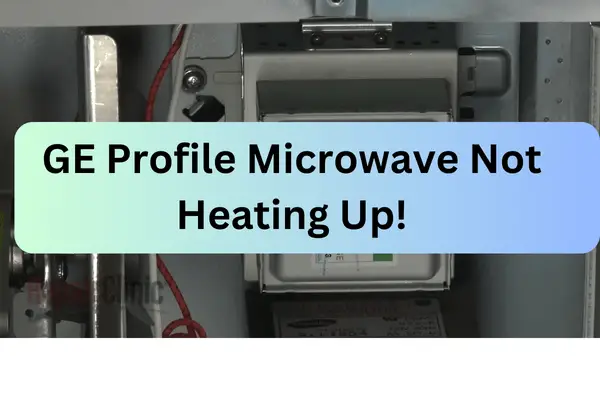A microwave that doesn’t heat up your food can break your heart! It makes warming, cooking, defrosting, grilling, and other modes impossible. In general, it disrupts the normalcy in your kitchen.
This problem has various causes. The most common include demo mode, broken diode, magnetron, power loss, low power level, broken door switch, and more. Troubleshooting the issue depends on the cause and ranges from maneuvering through the buttons to replacing broken components. Learn below why your GE microwave is not heating and how to resolve it.
- Demo Mode
If your GE Profile microwave isn’t heating, the most essential item to check is the demo mode. Sales guys usually set the oven in this mode to prevent it from heating up. The purpose is to demonstrate to buyers how the unit functions without actual cooking. So, if your unit is still in demo mode, it doesn’t heat up. How do you get your GE Profile microwave out of this mode? Refer to your user’s care guide or manual or;
- Open the door.
- Press the clock until demo mode pops up.
- Press the start button.
- Reset time, and you are out of demo mode.
2. Low Power Level
A low power level will not allow your oven to heat food. You may have enabled the setting by mistake. You can select a high-level setting on your microwave’s control panel. Press the Power Level button and increase the level.
- On the panel, press cook time, time cook, or micro cook.
- Press the number pads to enter your food’s cooking time.
- Tap the power level button and select between 1 and 10. The lowest is one, while the highest is ten.
- Press the start/pause button
3. No power
Power loss happens all the time. When it’s gone, your microwave’s display will be off. When on, it will be lit and allow you to make some selections. Confirm if this is the case by moving your plug to another socket, or be patient while power resumes.
4. Broken Door Switch
Microwave ovens do not operate with a half-closed door. It must latch completely for the controls to work. There are two steps to take;
- Open your GE microwave door and reclose it. Check if the unit is heating.
- Get a technician to test the door switch. If it is faulty, they will replace the components.
5. Magnetron Error
Magnetron is a component in a microwave oven that ensures the unit has powerful heat for cooking. It converts the two main currents in the oven, the electrical and magnetic energy, to powerful heat. If the magnetron or its components break, this process gets disrupted, and the microwave will not heat.
Diagnosing a magnetron error can be challenging if you aren’t a tech. Do not attempt to test or replace a microwave’s magnetron, as it is a high-voltage feature that can cause electrocution.
6. Shorted Diode
A damaged diode will not let your GE microwave heat. It works by converting an alternating current (AC) from the power source to a proper direct current (DC) in your oven. In addition, the diode enhances the voltage and powers the magnetron to heat your food. In other words, the magnetron relies on the diode to function. When the diode fails, the magnetron won’t have enough power to work.
The first indicator is a burning smell from the unit. Also, some ovens produce a louder-than-normal humming noise when you initiate a cooking cycle. This noise comes from the oven’s high-voltage transformer. Other times, it could be a silent oven. Both cases indicate a damaged diode that needs to be replaced. At this point, you need a tech to take care of the component.
7. Overuse
Has your GE microwave been running nonstop for hours? It happens when in a commercial setup or restaurant. You could have overworked the unit. Give it a break and recheck if it is working.
8. Aged GE Profile Microwave
An aged microwave can stop heating due to multiple component failures. The problems range from electronic control to broken diode to dead magnetron. If you suspect that your appliance is old and becoming outdated, it would be a relief to buy a new one. There are state-of-the-art microwave ovens.
Final Word
Now you have the ideal answer to why your GE Profile microwave is not heating your food. What remains is to narrow down the cause so that you have the proper diagnosis and solution. You can attempt simple troubleshooting tips, including increasing the power level and shifting the unit to a working power source. If the issue is complex for you, call your tech. They have the expertise to deal with broken diodes, magnetrons, and other controls. Good luck.
Related Article:

